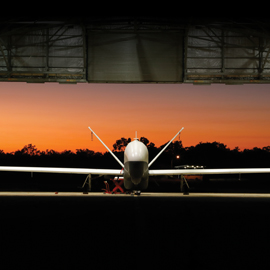Publications
"Nobody does defense policy better than CSBA. Their work on strategic and budgetary topics manages to combine first-rate quality and in-depth research with timeliness and accessibility—which is why so many professionals consider their products indispensable." – Gideon Rose, Editor of Foreign Affairs, 2010-2021
Ten Reasons DOD Needs an Appropriations Bill Now
The 2017 fiscal year once again began with an interim continuing resolution—the eighth year in a row that Congress has failed to pass a budget for the federal government by the start of the new fiscal year. This continuing resolution maintains the 2016 levels of funding for the Department of Defense (DoD) until December 9, 2016. With the Republicans maintaining control of the House and Senate and taking the White House, increases in defense spending would likely appear sometime after the new Congress and President take office in January. DoD might have a fiscal year (FY) 2017 spending bill in February or March if the defense hawks and the deficit hawks within the Republican caucus can come to terms.
Advancing Beyond the Beach: Amphibious Operations in an Era of Precision Weapons
The U.S. Navy and Marine Corps have been the world's most formidable amphibious force for more than seven decades. They have maintained more than 10 ships and 6,000 Marines continuously deployed since World War II, and conducted dozens of operations against contested beaches, islands, and cities in that time. The competition between amphibious forces and defenders ashore, however, is entering a new, more deadly, phase.
Analysis of the FY 2017 Defense Budget and Trends in Defense Spending
As the last budget request of the Obama Administration, the FY 2017 request largely continues the shift towards greater investment in the high-end capabilities necessary in a new strategic era that holds the potential for great power competition.
FY 2017 Weapon Systems Factbook
Each year, the Department of Defense (DoD) submits Selected Acquisition Reports (SARs) to Congress detailing the status, plans, and funding requirements for almost eighty Major Defense Acquisition Programs (MDAPs). The most recent unclassified SARs, which were submitted in December 2015 and are consistent with the President’s FY 2017 budget request, project funding and quantities for major acquisition programs extending more than thirty years into the future.
Extended Deterrence in the Second Nuclear Age
Ever since the early days of the Cold War, extended nuclear deterrence has been one of the most important but challenging aspects of American strategy. During the past 25 years, however, many of the extended deterrence dilemmas that preoccupied U.S. policymakers in the past ceased to be a major source of concern.
Winning The Salvo Competition: Rebalancing America’s Air And Missile Defenses
Over the last fifteen years, the Department of Defense spent more than $24 billion buying a mix of capabilities to defeat guided missile threats to U.S. and partner naval forces and land installations. Despite DoD's urgency, these investments have not resulted in air and missile defenses with sufficient capacity to counter large salvos of ballistic missiles, cruise missiles, and other precision-guided munitions (PGMs) that can now be launched by America's enemies.



























